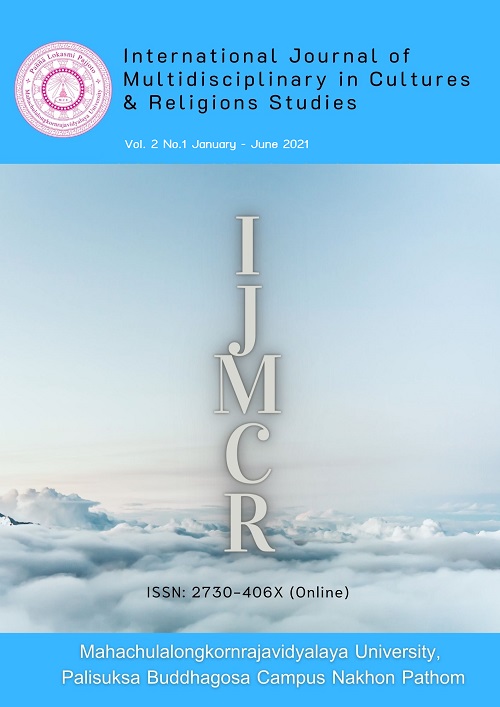Kalyanamitta of Social Study Teachers: in Subject of Buddhism at Schools of Muang District, Nakhon Pathom Province
Main Article Content
Abstract
The objectives of this mixed-method research on the Kalyānamitta of the Social Study Teachers: in Subject of Buddhism at schools of Muang District, Nakhon Pathom Province were to investigate the Kalyānamitta principle in Buddhism, to investigate the Kalyānamitta of the Social Study Teachers and to investigate the Kalyānamitta of the Social Study Teachers in the Muang District Schools: Nakhon Pathom Province. The mixed-method research through the qualitative approach has applied in-depth interview conducted with key informants for its data collection whereas the quantitative approach applied survey and questionnaire conducted with 302 samples to collect data.
The results revealed that:1) To conclude the interview contents in the Kalyānamitta (qualities of a good friend) of the Social Study teachers in the Muang District Schools: Nakhon Pathom Province, there was a problem of distraction which was required for the physical and mental promptness. Sometimes, there should be training on the Kalyāṇamitta for teachers to efficiently apply it with the learners. In addition, the Kalyānamitta was applicable to solve the problems of the instructional process and to also enhance the learning development within itself. 2) The level of the Kalyāṇamitta-dhamma (qualities of a good friend) of the Social Study teachers in the Muang district schools by overview was high (= 4.51, S.D. = 0.565). Mirroring by item and all were at high level. The highest level was the Bhāvanīyo or cultured knowledge (= 4.55, S.D. = 0.609). This was followed by the Vattā ca or the attentiveness (= 4.55, S.D. = 0.561). The lowest level was the Garu or the venerable person (= 4.47, S.D. 0.641). 3) The student respondents with genders, class year and school affiliations had different opinion upon the Kalyānamitta (qualities of a good friend) of the Social Study teachers in the Muang District Schools: Nakhon Pathom Province by statistical significance. 4) Most problem and barrier were, instructions sometimes hindered the periods of teaching followed by the teaching timetable arrangement or overloaded with contents, which met with inadequate time for teaching preparation. The least problem and barrier were some teachers were sometimes preoccupied on missions and disabled to 100% teaching. Students therefore had to review lessons by themselves.
Article Details
References
Kulbutr, S. (2007). Cultivating Morality and Ethics for Students. Bangkok: Sri Pathum University.
Office of Policy and Plan on Education, Religion and Culture. (199). The National Education Act BE 2542 (1999). Bangkok: Office of Policy and Plan on Education, Religion and Culture.
Office of the 8th National Economics and Social Development Commission. (2011). Handouts for Graduate Studies. Chiang Mai: Roongruang Printing.
Office of the National Education Commission. (2003). The National Education Plan (B.E. 2003-2016). Bangkok: Prik Wan Graphic Company.
Phra Manit Jotidhammo (Akkrachart). (2009). A Study on Problems and Their Solutions on Working of the Monks Teaching Morals. (Master Thesis). Mahachulalongkornrajavidyalaya University.
Phradhamma Pitaka (P.A. Payutto). (2003). Buddha-dhamma Revised and Elaboration. (11th ed.). Bangkok: Mahachulalongkornrajavidyalaya.


